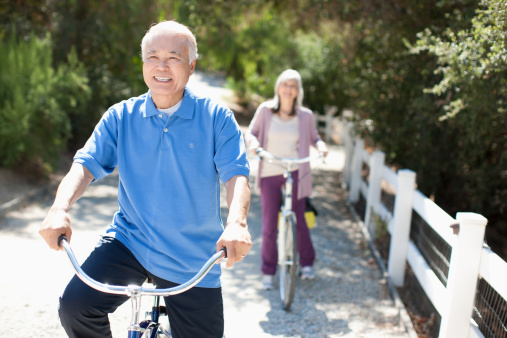AARP Hearing Center
As America Ages, “Community” is at the Center of Positive Change
By Nancy A. LeaMond, September 29, 2020 12:23 PM

Did you know that by 2030, one out of five Americans – about 78 million people – will be age 65 and older? That’s up from about one in eight in 2000. This demographic shift will impact all U.S. states, cities, and communities. In fact, between 2019 and 2024, each of America’s 200 largest cities will see an increase in the percentage of population that is age 65 and older.
The policy implications of this “aging of America” are considerable. At the federal level, policymakers must address growing pressure on critical programs like Social Security and Medicare as well as other services that support senior health, nutrition, and safety. But, with Washington D.C. mired in partisan sniping and gridlock, it’s our state and community leaders – governors, mayors, and council members, along with local entrepreneurs, innovators, and residents – who will be at the center of positive change. They are the best equipped to tackle tough issues and get things done.
AARP’s Focus on Livable Communities
Everyone knows the connection between AARP and aging. But AARP is also incredibly invested in the future of community because we understand the critical role that these places play for an aging population.
We work with mayors and local leaders of all political stripes to create and strengthen what we call “livable communities” – great places to live for residents of ALL ages and abilities, including older adults who want to stay in their homes and communities. In 2012, AARP became the U.S. sponsor of the World Health Organization’s Global Network of Age-Friendly Cities and Communities. In less than 10 years, nearly 500 states and communities – representing over one-third of the US population – have joined the network, including 21 of the 25 largest cities in the country. The towns, cities, counties, and states enrolled in the network frame their work around what are called the eight domains of livability: outdoor spaces and buildings, transportation, housing, social participation, respect and social inclusion, work and civic engagement, communication and information, and community and health services.
To be clear, our livable communities initiative is about more than seniors. We can, and we must, celebrate the benefits that livable communities offer to Americans of all ages. After all, a curb-cut designed for a wheelchair user also benefits a parent pushing a baby stroller. A crosswalk safe for an older American is also safe for a child. And, a community that’s livable for both a child and a senior is a community that’s livable for a lifetime.
A Leg Up & A Step Ahead
Age-friendly states and communities have an important leg up on other places. They are thinking ahead, setting up planning systems and initiatives that improve their built environment, foster economic growth, engage their citizens, and make for happier, healthier residents of all ages. They also understand the unique strengths that older residents bring to the table, and they take advantage of these opportunities. These include:
- The Pro Bono Dividend. Adults age 50 and up want to give back and make a positive impact on their communities. Three in four 50+ adults volunteered in the past year. In 2018, the economic value of their volunteer hours added up to a remarkable $140 billion. Now more than ever, retirees are an incredible resource that can be enlisted to work on our biggest challenges. For example, in Grayson County, Virginia, to support the response to the COVID-19 pandemic, volunteers set up and helped staff a phone “hotline” for isolated older adults to call to speak to other members of the community and request services.
- The Wisdom of the Crowd. Older adults have a lot of ideas and knowledge that they’re willing to share. It’s one reason why civic platforms – in-person and online – are emerging at ever-increasing rates in age-friendly states and communities, all with the goal of harnessing the collective intelligence of its citizens to solve complex social problems and discover opportunities for innovation.
- The Innovation Muscle. Innovation isn’t something confined to Silicon Valley or focused on the latest Gen Z trend. Age-friendly communities across the country are getting in on the action, rethinking services for an aging population. Louisville, Kentucky is a great example. The city leads the nation in the number of aging care corporate headquarters and boasts a robust health innovation startup scene that supports enterprises of all shapes and sizes. Groups like LEAP, The Hive, Humana’s Innovation Center, and The Thrive Center accelerate, incubate, and showcase solutions for health and aging technology.
- Green Streets and Public Spaces. Open spaces, public plazas, and room to walk, sit, and breathe have taken on new importance during the pandemic. But, creating walkable neighborhoods, parks, and other shared community spaces have always been part of what makes great places to live for people of all ages. AARP’s Community Challenge Grant program provides funding to local governments and organizations for “quick start” projects that improve their communities. Over the course of the program’s four years, 316 of the 560 total grants – or $3.3 million – have gone to help create vibrant public spaces.
Rebuilding America from the Ground Up
Post-pandemic, rebuilding is going to be about so many things, and many, if not most, will need to be assessed and addressed at the community level. Communities will have different challenges and different results depending on how they experienced the pandemic and how local leadership manages the rebuilding process moving forward.
Here are just a few of the pressing issues that communities will need to address in the post-pandemic world:
- Health Care. Moving forward, we will need changes in long-term care arrangements and more home-based care, in part as a reaction to the tragic toll the pandemic has had on nursing home residents. Primary care services will also continue moving into the community – with more urgent care centers, drug stores doing more, and wellness fairs and mobile health vans becoming more and more popular. And, as health data moves into the cloud and new connected devices launch, I’m optimistic that new technologies will help relieve some of the challenges that seniors will face in the next decade.
- Housing & Homelessness. Our leaders must take steps to meet ongoing, urgent housing needs and avert the forecasted “housing apocalypse.” As many as 40 million Americans are at risk of eviction in the next several months, potentially marking the most severe housing crisis in the country’s history. There are and will be more homeless… and migration is already starting from some places where housing is prohibitively expensive.
- Food Insecurity. The pandemic has triggered a dramatic increase in the number of families struggling to put food on the table. In a recent poll from the U.S. Conference of Mayors and Bloomberg Philanthropies, 93% of cities noted that demand at food banks and pantries has sharply increased. The pandemic has also increased food insecurity among older Americans. A Feeding America report found that 5.3 million seniors, or 7.3% of the 65+ population, were food insecure in 2018. In the wake of COVID-19, the group estimates that some 54 million Americans of all ages may face hunger. Communities will need to partner with the business community and nonprofits to help solve these food challenges.
- Closing the Digital Divide and Addressing Disparities. We have a new appreciation for how critical technology is to access services, information, and entertainment, as well as continue working and learning. Yet, the “digital divide” persists, with too many Americans lacking devices and affordable, reliable high-speed internet access. We need a full assault on this problem: devices and services that are affordable, training to use them, and broadband to keep everyone connected. But, technology alone cannot solve every problem. People of color and other underserved communities have been disproportionately affected by the pandemic . . . in terms of both health outcomes and economic impact. We must strive to address these disparities in a comprehensive way.
For more Information
For more information you can visit our website to access free publications, tools, and resources at www.aarp.org/livable. There you can subscribe to AARP’s free, weekly, livable communities e-newsletter. You can also visit aarp.org/livablemap to see an interactive map of how AARP is working in your state and your community.
































































